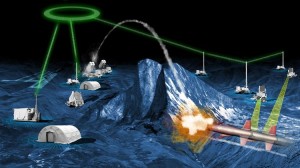The Army will hold a limited user test for its future missile defense command platform within the next couple months, a top Army missile defense official said on March 5.
Lt. Gen. Daniel Karbler, head of Army Space and Missile Defense Command, told attendees at an Association of the United States Army event the next demonstration for the Integrated Air and Missile Defense (IAMD) Battle Command System (IBCS), being developed by Northrop Grumman
[NOC], will look to prove out its ability to act as a ‘joint kill web’ capability.

“I am looking forward to a successful limited user test for IBCS, because we’ve gotten smarter from it. The prime has helped us out on it, Northrop Grumman has helped us to put the top engineers on it. The soldiers have been training on it. We’ve dedicated a unit to do it. So I’m looking for a successful test with IBCS,” Karbler said.
IBCS is the Army’s program to field a new next-generation missile defense control network that integrates the service’s full range of “sensor to shooter” capabilities, with plans to field an initial capability in 2022.
Karbler said the limited user test is intended to demonstrate IBCS’ ability to streamline the joint kill chain process for Army integrated air and missile defense by going after an ‘any sensor, best shooter’ approach.
“IBCS, what that allows us to do is my notion of a ‘joint kill web.’ You hear people talk about any sensor, any shooter. I think of it as any sensor, best shooter. And really, in discussions, it’s all sensors, best shooter,” Karbler said. “When you think about the capabilities that we could bring into IBCS to make sure that this ‘joint kill web’ truly brings in all the different capabilities, so that I don’t have to have this serial process to get myself to a solution at the end. I’m bringing in, across the ‘joint kill web,’ all these capabilities to help me make a good decision for engage or non-engage.”
In December, the Army completed a successful final developmental test with IBCS, which included linking Patriot and Sentinel radars, Marine Corps sensors and participation from two Air Force F-35s (Defense Daily, Dec. 13).
The latest test was conducted at White Sands Missile Range in New Mexico with soldiers utilizing the Army’s missile defense radars, as well as Marine Corps and Air Force sensors, to track the cruise missile surrogates and take down the targets using PAC-2 missiles.